Painting Tips
Tools for Painting Works
1. Brush
- Brushes made of hog or ox bristle should be used for alkyd paint.
- Blend polyester and nylon with animal bristle can be used for all purposes.
- A quality brush has flagged bristles and chiseled end for precise edging. A cheaper brush will have a blunt end, unflagged bristles.
2. Roller
- A roller should have a handle molded to fit your hand and should be well balanced when hold. There should be a threaded end at your handle to attach an extension handle for painting ceiling and high walls.
- Roller covers are available in a wide variety of nap lengths. Most jobs can be done with 3/8” nap.
- Synthetic roller covers are good with most paints especially latex paint. Choose a medium-priced synthetic roller cover to avoid fiber shedding onto painted surfaces.
- Wool or mohair roller covers give an even finish with alkyd paint.
3. Air Less Spray Gun
- Cost effectiveness for larger areas painting, uneven surfaces and faster job.
- Do not need compressor as per conventional spray gun.
- Need a skilled sprayer to avoid overspray and paint wastage.
- Choose a right tip size according to instrument manual and paint manufacturing manual for ease of handling and to achieve right thickness.
- Good for thicker paint film requirement.
4. Conventional Spray Gun
- Need air compressor to run the equipment (compressed air help in paint atomization).
- Good for thin paint film requirement and lower viscosity paint.
How to Use a Paint Brush
- Transfer some paint from the can into a small bucket (to help you move around the room easier).
- Double-check the types of paintbrush. Use synthetic bristle brush for water based and hog or ox bristle for alkyd based.
- Don’t overload your paintbrush. Dip the bristles only about half into the paint and tap on the side of the paintbrush.
- Begin with horizontal strokes in back and forth manner and from dry areas back to wet areas to avoid lap marks.
- Smoothen the paint evenly by using vertical strokes. Feather the edges by brushing lightly with the tip of your brush.
- To draw a straight line along the edges where a wall meets the ceiling or other surface (where you do not want it to be painted), hold the brush at a slight angle and stroke slowly to move the brush slightly away from your edges as you go.
How to Paint with Paint Roller
| 1 | Fill the paint tray reservoir. Dip the roller fully into the reservoir to load with paint. Lift the roller from the paint reservoir and roll it back and forth on the texture ramp to distribute the paint evenly onto the roller. The roller should be soaked but not dripping when lifted from the paint pan. | |
| 2 | 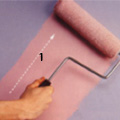 |
With the loaded roller, make a diagonal sweep (1) about 4’ long on the surface. Use slow stroke to avoid spattering and roll upward on the first stoke to avoid spilling. |
| 3 | 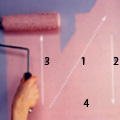 |
Draw the roller straight down (2) from top of the diagonal sweep. Shift the roller to the beginning of the diagonal and roll up (3). |
| 4 | 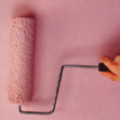 |
Distribute paint over the rest of the section with horizontal back and forth strokes. |
| 5 | 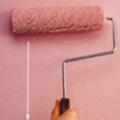 |
Smoothen the area by lightly drawing the roller vertically from the top to bottom of the painted area. Lift the roller and return to the top of the area after each stroke. |
Painting Ceilings and Walls
| 1 |  |
Painting Ceilings
|
| 2 | 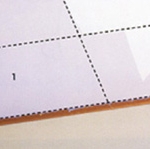 |
Painting Walls
|
Factors Affecting Colors
1. Reflection from Background Colour
- If the background colour is stronger than the small piece of sample, the small sample tends to pick up the reflectance from the background colour (e.g. Red in background, sample in shade of white, then the sample tends to appear white with reddish tone).
2. Different Light Source
- Different light sources with different wavelengths will give you different colour (e.g. Colour judge under natural light source such as day light when compared to the same colour judged under artificial light, incandescent light or even fluorescent light, will be very different.
3. Different Gloss Level
- Higher gloss level paint will look darker than the lower gloss level paint. Therefore, the same colour will appear to be slightly different over the range of products produced in differing gloss levels.
4. Different Thickness (Semi-Transparent Colour)
- Bright colours with organic pigment content will give you a poor hiding power compared to colours produced with natural earth pigments. Hence, the thickness of the paint film can affect the colour. The thicker it is, the darker/stronger the colour will be.
5. Different Application Methods
- There is a light variation in colour if shade card is compared to actual paint film. This is due to different application methods. Shade card is printing process and coating is applied using brush, roller or spray gun. Therefore, there is no 100% match to different application methods.
6. Tips
- It is always wise to keep at least a small amount of every paint colour and finishing products for touch up purposes. This is to avoid cumbersome problems that may arise during touch up especially those colour or product which might not be available in small quantity.
- Paint deep pattern surfaces with a stiff-bristled brush to help in penetration.
Iron and Steel (New)
Surface Preparation
- Clean thoroughly by sanding or wire-brushing where necessary. Remove grease by White Spirit or other suitable solvents.
Painting System
A
- 1 coat Zinc Chromate Primer
- 1 coat Universal Undercoat
- 2 coats Tungolac Gloss Paint
B
- Laminar Finish
- 1 coat Zinc Chromate Primer
- 2 or 3 coats Micaceous Metal Protective Paint
or
- 1 coat Zinc Chromate Primer
- 2 coats Exterior Aluminium Paint
Iron and Steel (Previously Painted)
Surface Preparation
- Surface should be dry, clean and free from dirt, grease and flaking materials. Where a firm surface exists, flat down to remove glass, spot prime where necessary. If the old paint films is in a badly deteriorated condition it may be necessary to work down to the original substrate either by or T Soff Paint Remover. The surface should then be completely cleaned and treated as for new work.
Painting System
- Similar to above for new iron and steel.
Galvanized Iron (New)
Surface Preparation
- Remove all traces of grease and dirt with White Spirit or suitable solvents. Lightly abrade surface with fine sandpaper.
Painting System
A
- 1 coat Self Etch Primer
- 1 coat Universal
- 2 coats Tungolac Gloss Paint
B
- Laminar Finish
- 1 coat Self Etch Primer
- 2 or 3 coats Micaceous Metal Protective Paint
or
- 1 coat Self Etch Primer
- 2 coats Exterior Aluminium Paint
Galvanized Iron (Previously Painted)
- Similar to iron and steel (previously painted).
Painting System
- Similar to above for galvanized iron (new).
Aluminium
- Light abrade surface with fine sandpaper, clean and degrease surface with White Spirit or other suitable solvents.
Painting System
- Similar to above for galvanized iron (new).
Wood Work (New)
- All new woodwork should be well seasoned and treat knots to a smooth even surface. Remove all dust and loose particles before the application of the priming coat.
- New woodwork should be clean of all loose material, mould or other contaminants. Rub down with sandpaper and dust off prior to application.
Painting System
- 1 coat Aluminium Wood Primer
- 1 coat Universal Universal
- 2 coats Tungolac Gloss Paint
- 2 coats Siscoseal Decorative Wood Stain
Wood Work (Previously Painted)
- If the paint film is intact, rub down with fine sandpaper to remove gloss, ensure that the surface is clean.
- If paint film has cracked and flaking has occurred, remove existing paint with T’ Soff Paint Remover and, under such circumstances, the surface should be treated as for new work.
- Previously painted surface should be stripped and cleaned completely to bare wood.
Painting System
- 1 coat Universal Undercoat
- 2 coats Tungolac Gloss Paint (or If no major colour change is involve: 2 coats Tungolac Gloss Paints)
- 1 coat Aluminium Wood Primer 1 coat Universal Undercoat 2 coat Tungolac Gloss Paint
- 2 coats Siscoseal Decorative Wood Stain
Plaster, Concrete, Cement Rendering, Asbestos-Cement and Other Similar Surfaces (New)
Surface Preparation
- All new work should be clean and dry before painting. Any efflorescence (powdery residue) should be wiped off and painting should not be attempted before efflorescence has ceased.
Painting System
A
- Emulsion Paint 1 coat Alkali Resisting “D” Primer (Refer Note)
- 2 or 3 coats Super Siscolux Emulsion Paint All Weather Acrylic Paint or Masonry Paint
B
- Gloss Paint 1 coat Alkali Resisting “D” Primer (Refer Note)
- 1 coat Universal Undercoat 2 coats Tungolac Gloss Paint
Note: Under severe alkaline condition – 1 coat Powerkote Primer.
Plaster, Concrete, Cement Rendering, Asbestos-Cement and Other Similar Surfaces (Previously Painted)
- If existing paint film is still firm and in good condition, remove all dirt and loose chalk by sandpapering or high pressure water jet and treat surface as for new work. Where the surface has been previously painted with several coating of cement base paint or emulsion paint which has been adulterated with lime or extenders, thus an absorbent, soft and “chalky” surface is usually apparent. Under such conditions remove as much of the previous coatings as possible by scraping or high pressure water jet. If all the old paint can be removed proceed as far new work otherwise a sealer coat to blind the surface is necessary.
Painting System
A
- Where all old paint can be removed: 2 to 3 coats Super Siscolux Emulsion Paint, All Weather Acrylic Paint. or Masonry Paint.
B
- Where not all old paint can be removed: 1 coat Alkali Resisting “D” Primer thinned with water. 2 or 3 coats Super Siscolux Emulsion Paint, All Weather Acrylic Paint. or Masonry Paint.
Interior Timber or Parquets Floors
- Sand down surface to a smooth and even surface and remove all loose particles and dust before the application of the first cost of paint.
Painting System
- 2 or 3 coats Floor Dressing to be applied direct to the substrate allowing overnight dying in between coats.
Interior Timber or Parquets Floors (Previously Waxed or Used)
- All traces of wax must be removed by sanding to bare wood.
Painting System
- 2 or 3 coats Floor Dressing
Hard-Board, Soft-Board and Chipboard
Surface Preparation
- Sand down surface to a smooth surface and remove all loose particles and dust before the application of the first cost of paint.
Painting System
A
- Gloss Paint
- 1 coat Universal Undercoat
- 2 coats Tungolac Gloss Paint
B
- Emulsion Paints
- 1 coat Alkali Resisting “D” Primer
- 2 coats Super Siscolux
- Emulsion Paint, All Weather Acrylic Paint Or Masonry Paint
If water soluble stains are present seal surface with 1 coat Universal Undercoat.
Asbestos-Cement Roof and Cladding (Old)
- If no fungus growth is apparent wash the surface to ensure that all traces of loose particles are removed.
- Where the surface has attacked by fungus growth it should be treated by scrubbing with a sterilization solution until all traces of mould are removed.
Painting System
- Similar to above for new Asbestos-Cement roof and cladding.
- Sterilised with Anti-Mould Solution before application of Asbestocote.
Exterior Wooden Fencing
Surface Preparation
- Remove all loose particles and dirt, and sand down surface to a smooth surface before painting.
Painting System
A
- Gloss Pint
- 1 coat Aluminium Wood Primer
- 1 coat Universal Undercoat
- 2 coats Tungolac Gloss Paint
B
- Wood Preservative
- 2 coats Rustikol, Wood Preservative direct to substrate
C
- 2 or 3 coats Siscoseal Decorative Wood Stain
Galvanized Drinking Water Tank
Surface Preparation
- Remove all traces of grease and dirt with White Spirit or other suitable solvents. Lightly abrade surface with fine sandpaper.
Painting System
A
- Internal Surface
- At least 2 coats of Water Tank Black
B
- External Surface
- 1 coat Self Etch Primer
- 2 coats Exterior Aluminium Paint or 2 coats of Micaceous Metal Protective Paint
Mild Steel Chimney (Temperature Up to 1000° F)
- Surface must be absolutely clean, preferable shot blaster.
Painting System
- 2 coats of Heat Resisting Aluminium Paint Type B direct to bare substrate.
